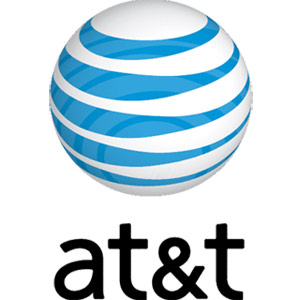Among Atlanta AT&T gadgets, medical message in a bottle

Sometime this fall, patients are going to head home from the pharmacy with a free, flashing, noisy tattletale of a pill bottle.
The bottle will glow and ring aloud when it’s time to take a pill. And it will report slackers: A pill-skipper can expect at least one robotic telephone call per missed dose.
Insurers, drug makers and pharmacies will pay for the bottle, on the grounds that it will keep people healthier and sell more pills.
And benefiting quietly in the background will be Atlanta-based AT&T Mobility, whose wireless system supports the bottle's smarts.
The dispenser is one of a group of products targeted by the company’s emerging devices team, in an effort to expand the reach of AT&T's wireless business.
Connected devices such as the pill bottle are a different kind of business than traditional cellphone contracts. But the cellphone market is almost saturated, with brand new cellphone customers now few and far between. Connecting devices will allow AT&T to grow.
So AT&T has been looking at gadgets and experimenting with business models: Patients who take home the nudging pill bottles, for instance, won’t necessarily know they’re using AT&T.
“Our game is to connect everything to everything,” said Glenn Lurie, president of the emerging markets group. “When you walk into Best Buy, the reality is that every single one of those products will be connected some day.
“It’s simple, it’s not rocket science, and it’s a billion-dollar opportunity. We want to wirelessly enable everything.”
Lurie’s group is looking at the health care industry, at opportunities in trucking and logistics and in more interactive electric grids, along with anything and everything that goes in a car. It sees a market in the front seat, where the company already has wired GPS devices, and in the backseat, where kids “want the Web, they want e-books, they want music, they want, they want, they want,” Lurie said.
As has become typical, AT&T and its arch-rival Verizon disagree on who's ahead in the market. AT&T says it's the undisputed leader with 6.7 million connected devices. But Verizon reported 7.7 million connected devices in its system at the same time.
An AT&T spokeswoman said the company "can't speak to what other companies consider a connected device," and that it had more certified, non-handset devices on its network. Spokeswoman Dawn Benton said AT&T also covers more consumer product categories. Verizon disputes that, too.
AT&T’s connected devices push began in 2007, when CEO Randall Stephenson opened a Christmas present. It was the new Amazon Kindle e-reader. It used a wireless network to deliver e-books, with the cost embedded in the device and the books.
It was simple, elegant, and it used an AT&T competitor -- Sprint. The emerging devices division was born.
Stephenson charged Lurie and his new team with finding and bagging the next Kindle, giving the team an entrepreneurial level of flexibility.
That flexibility, AT&T’s big distribution system and its technology -- in use globally -- all helped, said Lurie: “With consumer electronic manufacturing, you want a device that you can sell all over the world.”
The group works through partnerships. The most famous is with Apple, which requires iPad buyers to sign up for AT&T service. But the company also is linked with gadgets in ways less obvious to consumers.
The Kindle uses AT&T now, not Sprint. (“I did, yes,” said Lurie, when asked if he stole it.) So does Barnes & Noble’s Nook e-reader. In both cases, customers don’t know they’re indirect AT&T customers.
AT&T provides interactive capacity to Garmin and TomTom GPS equipment, adding real-time traffic, weather and gas price data to devices that once displayed only what was loaded in at the front end. Again, the equipment provider pays AT&T.
Customers also pay AT&T indirectly when they buy and use some electronic picture frames, capable of instantly displaying e-mailed photos.
The company works with portable wireless-enabled GPS devices that help track packages, too, and sees them tucked in kids' pockets and embedded in dog collars one day.
“No matter who you are," Lurie said, "we will talk to you, even if you’re a guy and a gal with duct tape in a garage.”
The smart pill bottle makers are a case in point. The Cambridge, Mass., start-up, Vitality Inc., has fewer than 10 people in its employ, co-founder and president Joshua Wachman said.
Vitality created its “GlowCap” pill bottle a few years ago, armed with studies showing people stayed with pill regimens if reminded and aware they're being watched: Data from the bottles goes to a company that follows up with robo-calls, if a pill is skipped. Calls can go to relatives, too.
Until the AT&T deal, its data capability relied on an ethernet or USB connection and it sold the bottles online.
With AT&T, the company is moving into big markets with an entirely new business model -- the one in which the bottles are "free" to patients and revenue from drug makers, pharmacies and insurers pays Vitality and AT&T.
The telecom giant has been easy to work with, Wachman said: “I had expected more big-company-itis.”
AT&T has also opened doors all over the world, he said. “It’s like having the wind at our backs.”
source: http://www.ajc.com/business/among-atlanta-at-t-596746.html

Comments
Post a Comment